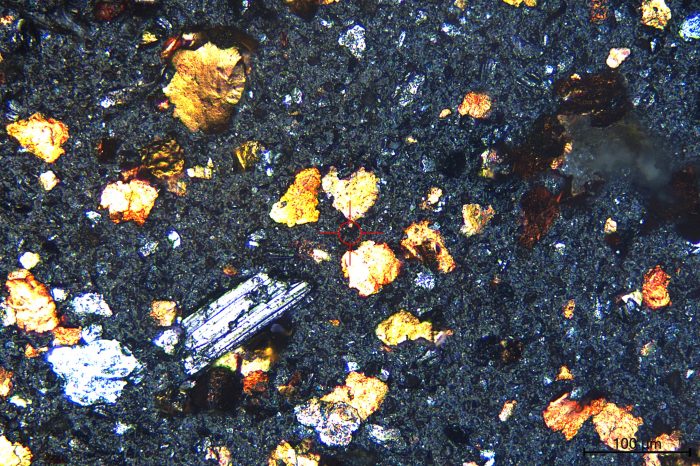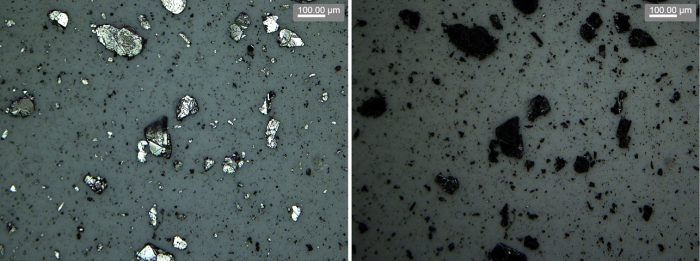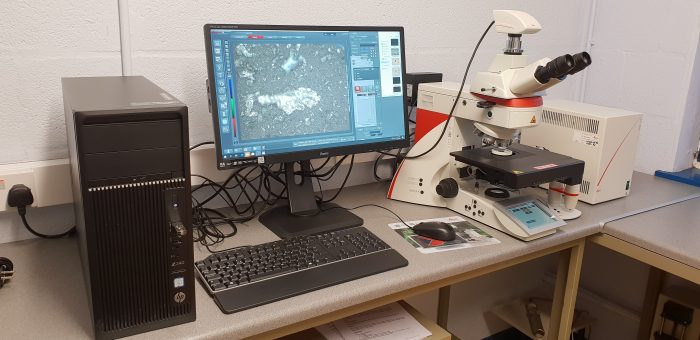Microscopic Examination
This should be single default
A good place to start any investigation is Microscopic Examination of the debris sample or of particles isolated from a fluid sample through filtration. The samples may be examined under a range of magnifications and illumination conditions (incident, transmitted, polarised or dark field illumination).
This helps to indicate the quantity of debris and its composition with respect to particle type and size. I.e. are they large or small, what is their aspect ratio, are they curved (cutting wear), are there surface features (striations/ridges), are they metallic or not, translucent or opaque, shiny/reflective or dark/dull, crystalline or amorphous, is there silt present (fine sub-micron particles) etc.
This may guide method selection for further testing as well as providing answers to questions on the origin of the debris and its characterisation.

The above image shows metallic wear debris (both ferrous and copper containing) on a deposit of dark silt (fine sub-micron particles and larger debris).

What appears to be metallic debris under incident light can be seen as dark particulates under side on illumination (dark field).

Our state of the art Leica Cleanliness Expert Microscope with motorised stage.
